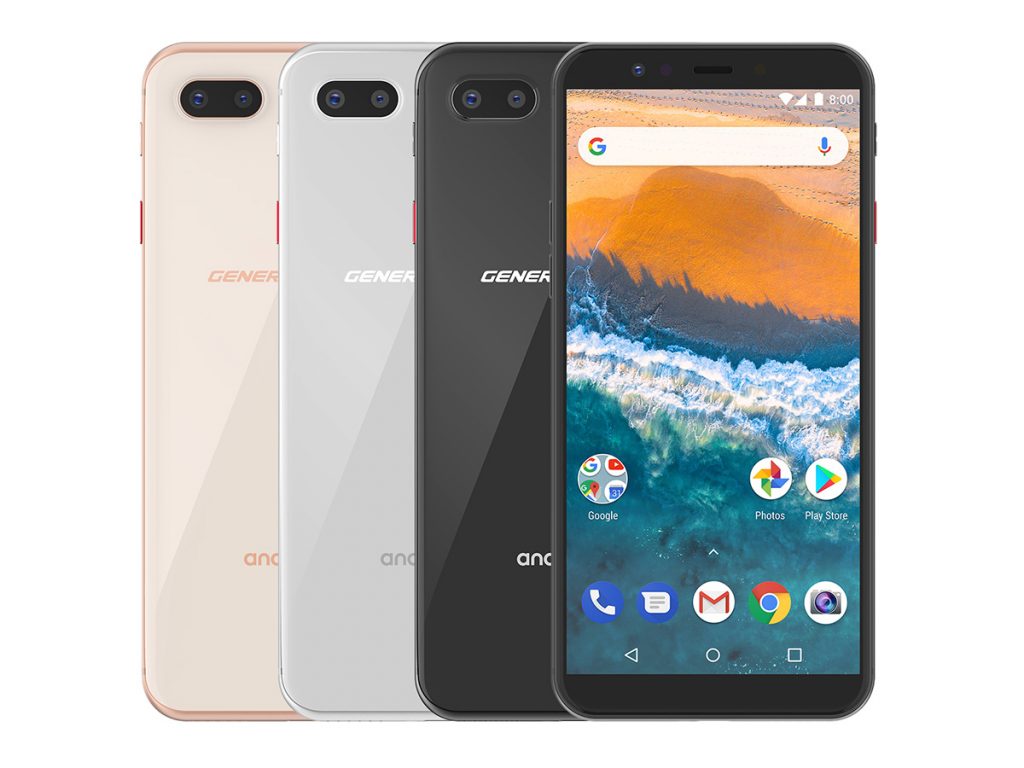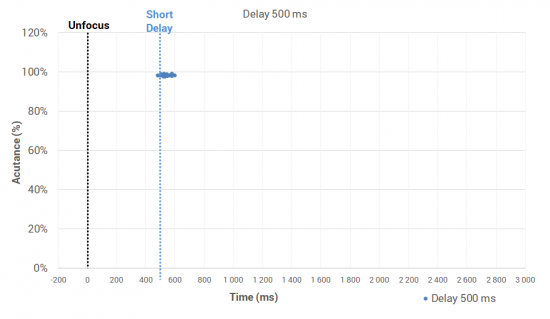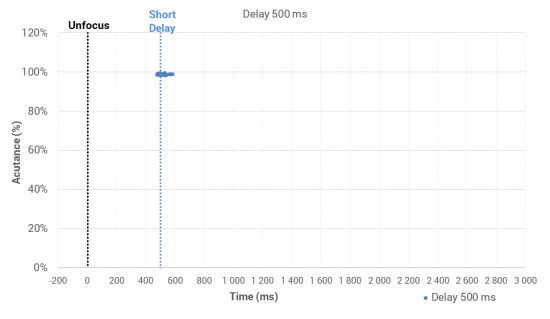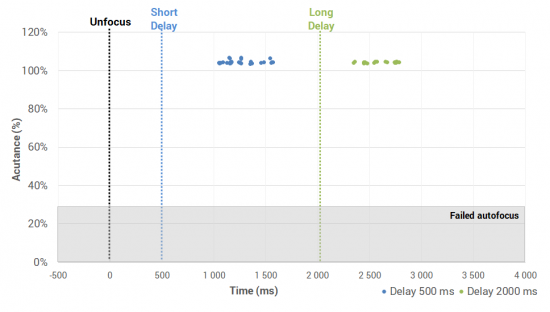Please note: In September 2019, we updated the DXOMARK Mobile test protocol to cover ultra-wide-angle performance and renamed the protocol DXOMARK Camera. We also expanded our low-light testing and created the new Night sub-score, which incorporates the previous Flash score. We have retested this device using the new Wide and Night test protocols and updated the scores in this review, but we have not changed the text from the original review. For more information, please see the articles about our new Wide and Night test protocols.


General Mobile GM 9 Pro camera review (originally published September 11, 2018)
Turkish manufacturer General Mobile prides itself on developing affordable, high-quality smartphones equipped with the latest technology. The GM 9 Pro is their latest offering, featuring a dual-camera setup with 12Mp resolution, dual-pixel autofocus and electronic stabilization, all powered by a Snapdragon 660 chipset. On paper that’s plenty for the smartphone photography enthusiast to get excited about, but how will it fare under the rigors of a full DxOMark test?
Key specifications
- Dual camera
- Primary camera: 12Mp 1/2.55″ sensor, f/1.8-aperture lens
- Secondary camera: 8Mp 1/4″ sensor, f/2-aperture lens
- Dual-pixel autofocus
- Qualcomm Snapdragon 660 chipset
- Electronic image stabilization
Test summary
With a DxOMark Mobile score of 90 points, the GM 9 Pro puts in a solid performance for both stills and video. Its key strengths for stills are excellent autofocus in good light, generally nice texture and color, and acceptable HDR results. The second camera is used only for bokeh simulation, however, so zoom shots are more on par with a single-cam device.
Bokeh results are nice, with a strong background blur and reasonable, if not perfect, depth estimation. Shooting video, the GM 9 Pro’s stabilization system is excellent; and as with stills, its exposure, color, and autofocus offer good, if not outstanding, results.
In high-contrast scenes, the GM 9 Pro’s HDR mode kicks in automatically, so we were able to record wide dynamic range in our high-contrast natural test scenes, capturing detail in both the shadows and highlights. Some irregularities in HDR processing were evident when shooting consecutive images of the same scene, however, so it’s worth snapping a few frames to see which ones are the most successful. Our backlit portrait was excellent, though, with good brightness on the face and well-exposed highlight detail outdoors.
Shooting in well-balanced light, the GM 9 Pro’s exposures are generally accurate, although we did observe some overexposure in outdoor images, resulting in low contrast and desaturated color, and some underexposure in very low light. Those issues aside, color rendering is generally pleasant in outdoor and indoor lighting, with mainly accurate white balance and well-saturated hues. In low light, some color casts are evident under artificial light sources, but they’re not overly offensive; and although strong color shading is also evident, this isn’t uncommon with smartphones.
Packing flagship-level dual-pixel autofocus technology, the GM 9 Pro performs excellently in outdoor and indoor lighting, consistently capturing in-focus shots with virtually no lag. It wasn’t as quick in low light, however, where there was a noticeable delay of up to a second for the device to find focus, but it was still just as accurate, with all our test shots in good focus.
Texture is a strength for the GM 9 Pro, with particularly good results between 70% and 80% acutance in static scenes shot under outdoor and indoor lighting. In outdoor shots, the GM 9 Pro preserved many fine details, except in very low-contrast areas, where things get a little “smudgy.” Fewer details are recorded in low light and in scenes with motion, but this isn’t uncommon for smartphones, and on the whole, the GM 9 Pro is on par with some of the flagship devices we’ve tested for texture.
The GM 9 Pro offers a good compromise between sharpness and noise. In low light (20 lux), smoothing isn’t quite as strong as for the best devices we’ve tested, with a little more luminance noise visible in the shadows, but it’s a modest improvement over other flagship devices, such as the Google Pixel 2. Shooting outdoors, slight luminance noise is visible in areas of uniform color, such as the sky, with some low-frequency chromatic noise evident in low-contrast and shadow areas; but overall, noise is well-controlled.
We deduct points for obvious artifacts, or visible flaws, applying the main penalties to the GM 9 Pro for flare, fringing, ghosting, and vignetting. The most problematic is flare, which is strongly visible in images shot towards the sun or a bright light source, with multiple light streaks recorded across large areas of the image. Ghosting also occurs on moving subjects in outdoor shots, and a difference between the sharpness in the center and the edges of the frame is visible in many images.
Despite being a dual-camera device, the GM 9 Pro’s second camera is used only for bokeh simulation in Portrait mode. This means its zoom results are more on par with single-camera smartphones, with acceptable results at medium range (approximately 2x magnification) — capturing fine details with well-controlled noise. At long range (4x and 8x magnification), however, a significant loss of detail is evident, with moiré and fringing often visible at close inspection, too.
The GM 9 Pro achieves a good score of 45 for bokeh, thanks to a strong but attractive background blur applied to people pictures. Results are also consistent across consecutive frames; the bokeh renders with a pleasant shape to the spectral highlights; and the level of noise is consistent. Some depth estimation artifacts, with masking errors around complex details such as a hand or hair, are visible when viewing the images at large scale. Noticeable steps in the blur gradient are also apparent on some images.
Results are pretty impressive when using flash as the only slight source, with very good exposure, white balance, and color rendering. There’s a slight loss of detail, with noticeable noise towards the corners where lens shading occurs, and the red-eye effect is often visible, but overall results are good for such challenging conditions. The results aren’t quite as impressive when mixing flash with additional light sources, however, with color casts, color shading ,and exposure instabilities across consecutive frames all in evidence during testing, which is a shame.
Achieving an overall Video score of 88 points, the GM 9 Pro is just as capable shooting moving images as shooting stills. A key strength is its effective stabilization in all lighting conditions, which ensures stable results with walking motion and during scene changes, as well as nicely limiting the jello effect. Video autofocus is excellent, too, and interestingly, it doesn’t seem to suffer the slow focusing reaction times we observed with stills in low light. Although it’s fair to say that focus tracking is better in bright light, and that the focus can be a little jerky generally, overall it’s a solid system in all lighting conditions.
Video exposure is good, if not outstanding, but again, the GM 9 Pro is consistent in all lighting conditions, with mainly accurate target exposures in all but the very darkest test conditions. Dynamic range is limited compared to the best results we saw for stills, but convergence during lighting changes is quick, with no significant oscillation or overshoot ruining the viewing experience on playback. Color rendering is best outdoors, where hues pack the most punch, but it’s far from bad under indoor or very low-light conditions; and white balance is generally accurate, although a pinkish cast is evident in many outdoor videos.
There are a few video gripes, including a noticeable judder effect, a low frame rate, a difference in sharpness between frames, and noticeable moiré and cyan shift effect in some videos. A coarse luminance noise is also visible in indoor videos and particularly in low-light videos, which can be distracting on playback, but outdoor videos are much cleaner and have good detail preservation to boot.
Conclusion
The General Mobile brand may not be well known to many, but with the Turkish manufacturer’s vision of global recognition for their smartphones, that may change soon. The GM 9 Pro is an encouraging step toward that end, as it delivers some very respectable photography results. Overall, it doesn’t reach the heights of flagship devices from more familiar brands, but it puts in a solid and consistent performance for both stills and videos, and is a strong competitor in the mid-range segment.
Pros
- Fast and accurate autofocus in brighter light
- Good dynamic range
- Well-controlled noise
- Good bokeh effect
Pros
- Excellent video stabilization
- Good exposure
- Nice detail in bright light
- Solid autofocus performance
Cons
- Many visible artifacts
- Target exposure inaccuracies
- Slow autofocus in low light
Cons
- Pink cast outdoors
- Limited dynamic range
- Coarse noise in low light
























DXOMARK encourages its readers to share comments on the articles. To read or post comments, Disqus cookies are required. Change your Cookies Preferences and read more about our Comment Policy.